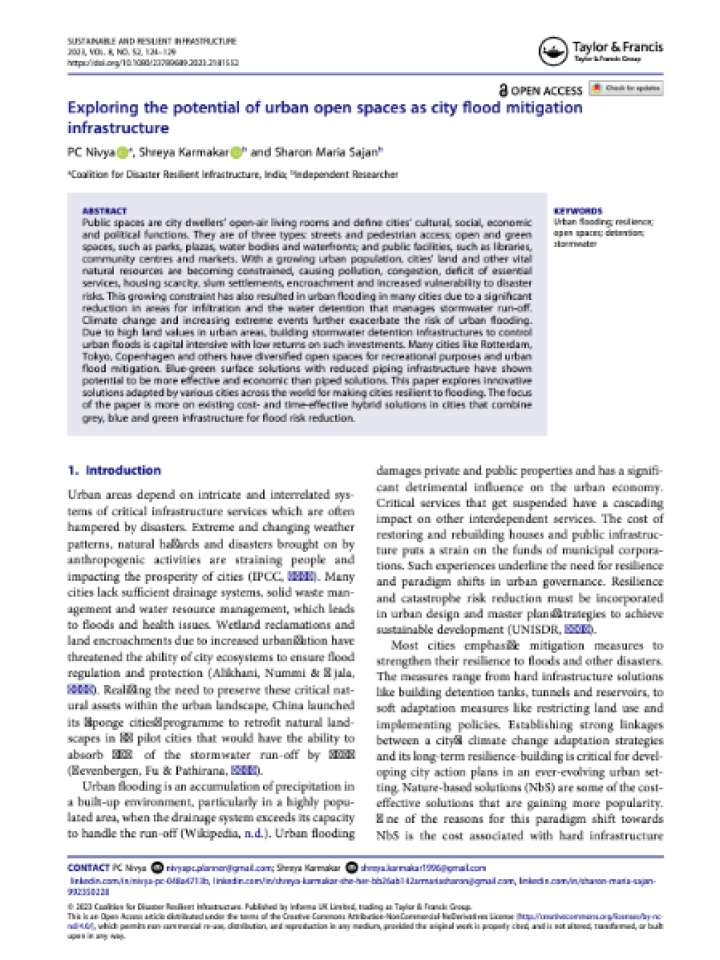Exploring the potential of urban open spaces as city flood mitigation infrastructure
Public spaces are city dwellers’ open-air living rooms and define cities’ cultural, social, economic and political functions. They are of three types: streets and pedestrian access; open and green spaces, such as parks, plazas, water bodies and waterfronts; and public facilities, such as libraries, community centres and markets. With a growing urban population, cities’ land and other vital natural resources are becoming constrained, causing pollution, congestion, deficit of essential services, housing scarcity, slum settlements, encroachment and increased vulnerability to disaster risks. This growing constraint has also resulted in urban flooding in many cities due to a significant reduction in areas for infiltration and the water detention that manages stormwater run-off. Climate change and increasing extreme events further exacerbate the risk of urban flooding.
Due to high land values in urban areas, building stormwater detention infrastructures to control urban floods is capital intensive with low returns on such investments. Many cities like Rotterdam, Tokyo, Copenhagen and others have diversified open spaces for recreational purposes and urban flood mitigation. Blue-green surface solutions with reduced piping infrastructure have shown potential to be more effective and economic than piped solutions. This paper explores innovative solutions adapted by various cities across the world for making cities resilient to flooding. The focus of the paper is more on existing cost- and time-effective hybrid solutions in cities that combine grey, blue and green infrastructure for flood risk reduction.
Explore further
